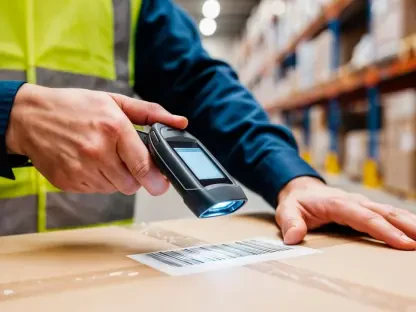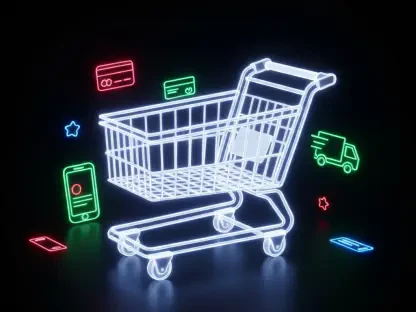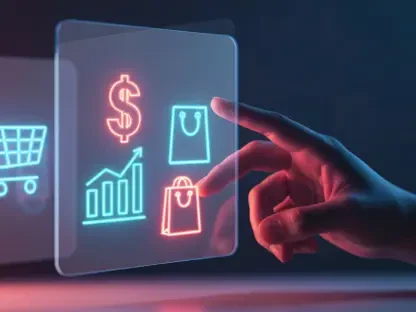Last-mile logistics, often regarded as the most intricate and costly segment of the supply chain, stands at a critical juncture in 2025, with global e-commerce sales continuing to soar and customer expectations reaching unprecedented heights. The final stretch of delivery, from warehouse to doorstep, accounts for a significant portion of total logistics expenses, frequently cited as up to 50% of overall costs by industry analysts. This pivotal link not only determines operational efficiency but also shapes customer satisfaction in an era where same-day delivery is no longer a luxury but a standard. As businesses grapple with rising demands, digital solutions have emerged as a transformative force, promising to streamline processes and redefine competitive edges in a rapidly evolving market.
Understanding Last-Mile Logistics: The Critical Link in Supply Chain
Last-mile logistics represents the final, and often most challenging, phase of the delivery process, where goods are transported from distribution hubs to end consumers. This segment is notorious for its high costs, driven by factors such as urban congestion, fuel expenses, and the need for precise coordination. Its importance has intensified with the exponential growth of online shopping, where timely and accurate deliveries directly impact brand loyalty and market share.
The significance of this stage extends beyond cost, as it serves as the face of a company’s service in the eyes of the customer. Modern expectations demand not just speed but transparency, with consumers seeking real-time updates on their orders. Key players like Aptean have positioned themselves at the forefront of this transformation through strategic acquisitions, such as Paragon, a leader in routing and scheduling software, and 3T, a specialist in carrier management, thereby enhancing their technological offerings.
Industries ranging from retail to manufacturing are directly affected by last-mile dynamics, with each sector facing unique delivery constraints. Digital tools are increasingly vital in addressing these challenges, offering solutions that optimize routes, reduce operational bottlenecks, and improve visibility. Such advancements enable businesses to meet stringent delivery windows while managing the complexities of diverse logistical needs.
The Digital Transformation of Last-Mile Delivery
Emerging Trends and Technological Innovations
The shift toward digitization in last-mile logistics marks a significant departure from traditional methods, with data-driven strategies becoming the cornerstone of operational efficiency. Companies are leveraging sophisticated algorithms to analyze variables like traffic patterns and delivery constraints, ensuring resources are utilized optimally. This transition reflects a broader industry trend toward automation and precision in managing complex delivery networks.
Key technologies, such as routing and scheduling software exemplified by Paragon, alongside real-time tracking tools like electronic Proof of Delivery (ePOD) and electronic Proof of Fulfillment (ePOF), are redefining execution standards. These innovations provide end-to-end visibility, allowing both businesses and customers to monitor shipments with unprecedented accuracy. Additionally, consumer demands for narrow delivery windows and enhanced communication have spurred the adoption of these tools, aligning logistics with modern expectations.
Market drivers, including the relentless expansion of e-commerce, continue to push for technological integration. Opportunities for efficiency gains through automation are vast, as businesses seek to minimize manual intervention and human error. The convergence of these trends signals a future where digital solutions are not just advantageous but essential for maintaining competitiveness in a crowded marketplace.
Market Insights and Growth Projections
The growth trajectory of last-mile logistics remains closely tied to online shopping trends, with industry reports projecting a sustained increase in delivery volumes over the next few years, from 2025 to 2027. This surge is fueled by a global consumer base increasingly reliant on digital platforms for everyday purchases, placing immense pressure on logistics providers to scale operations. Data indicates that digital solutions have already begun to yield measurable benefits, with some companies reporting cost reductions of up to 20% through optimized routing.
Performance metrics further underscore the impact of technology, as delivery accuracy rates improve alongside reduced planning times. Businesses adopting digital tools often experience a marked decrease in customer complaints, attributed to better transparency and communication during the delivery process. Such improvements are critical in an environment where a single delayed shipment can tarnish a company’s reputation.
Looking ahead, forecasts suggest a rapid acceleration in technology adoption within the sector, with widespread digital transformation anticipated across small and large enterprises alike. Analysts predict that by 2027, a majority of logistics providers will integrate advanced software solutions to handle rising demand. This shift promises not only operational enhancements but also a redefined customer experience, positioning technology as a linchpin of future growth.
Challenges in Last-Mile Logistics: Balancing Cost and Customer Expectations
High operational costs remain a formidable barrier in last-mile logistics, with expenses related to fuel, labor, and vehicle maintenance often straining budgets. Urban environments exacerbate these issues, as congestion and parking limitations complicate delivery schedules. Balancing these financial burdens with the need for efficiency requires innovative approaches to resource allocation and strategic planning.
Beyond costs, meeting modern customer expectations poses a significant challenge, as demands for same-day delivery and value-added services like installation become commonplace. These requirements add layers of complexity to logistics operations, necessitating robust systems capable of handling diverse requests. Failure to adapt to such expectations can result in diminished customer trust and lost market opportunities.
Technological adoption also varies widely across the industry, with some businesses still tethered to manual or paper-based systems. This disparity hinders uniform progress, as legacy processes struggle to keep pace with digital alternatives. Overcoming these hurdles involves targeted investments in software for route optimization, which can drastically cut planning time, alongside training initiatives to bridge the gap between traditional and modern practices.
Regulatory and Compliance Considerations in Logistics Technology
The regulatory landscape governing last-mile logistics encompasses a range of considerations, from data privacy laws to transportation safety standards. Compliance with these mandates is non-negotiable, as violations can lead to significant penalties and reputational damage. Digital tools must therefore be designed with security and transparency in mind, ensuring sensitive information is protected throughout the delivery cycle.
Adapting to regulatory changes often influences the pace of technology adoption, as companies must align new systems with evolving legal frameworks. For instance, stricter emissions standards may necessitate fleet upgrades, while data protection regulations demand robust cybersecurity measures. Navigating this environment requires a proactive approach to integrating compliant solutions that support operational goals.
System reliability plays a crucial role in meeting both regulatory and customer expectations, with providers like Aptean boasting a 99.9% uptime for their platforms. Such dependability ensures uninterrupted service, fostering trust among stakeholders while adhering to compliance requirements. As regulations continue to evolve, the ability to maintain consistent performance will remain a key determinant of success in the logistics sector.
The Future of Last-Mile Logistics: Innovation and Opportunities
Emerging technologies such as artificial intelligence and the Internet of Things are poised to reshape last-mile logistics, offering predictive capabilities and real-time data integration. These advancements enable smarter decision-making, from anticipating delivery delays to optimizing fleet utilization. As these tools mature, their integration into existing systems will likely become a standard practice across the industry.
Potential disruptors, including autonomous delivery vehicles and drone technology, present intriguing possibilities for reducing human intervention and operational costs. While still in developmental stages for widespread use, pilot programs demonstrate promising results in controlled environments. These innovations could redefine delivery models, particularly in densely populated urban areas where traditional methods face significant constraints.
Shifting consumer preferences, especially a growing emphasis on sustainability, are also influencing future logistics strategies. Demand for eco-friendly delivery options, such as electric vehicles, is prompting companies to rethink their environmental impact. Coupled with increased investment in digital tools and a gradual transition from manual to automated processes, these trends highlight substantial growth areas amid global economic considerations.
Closing Reflections
Reflecting on the journey of last-mile logistics, it is evident that digital solutions have carved a transformative path, enhancing both efficiency and customer satisfaction across diverse sectors. The industry has witnessed a remarkable shift, driven by technologies that tackle longstanding challenges like high costs and complex delivery demands. This evolution underscores the power of data-driven tools in redefining operational benchmarks.
Looking back, the transition from manual to automated processes has opened doors to significant improvements, though disparities in adoption persist. Businesses that have embraced platforms like Paragon have gained a competitive edge through cost savings and improved service delivery. The focus now turns to scalability, ensuring these advancements reach even the smallest players in the market.
As a final consideration, companies are encouraged to prioritize strategic investments in digital infrastructure to stay ahead in an ever-competitive landscape. Exploring partnerships with technology providers offers a viable route to access cutting-edge solutions without prohibitive costs. Ultimately, the path forward hinges on a commitment to innovation, ensuring last-mile logistics continues to adapt and thrive in meeting future consumer needs.









